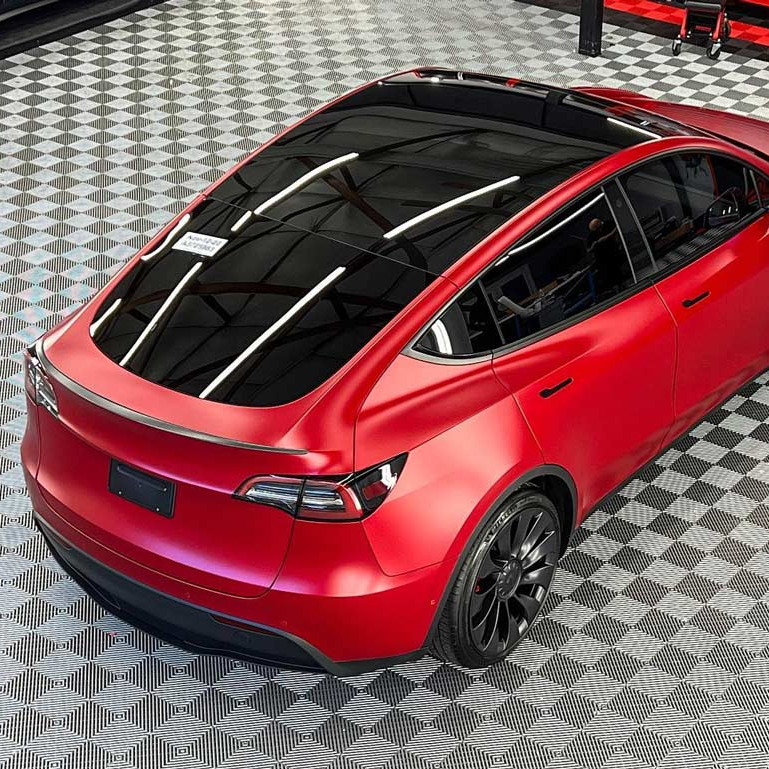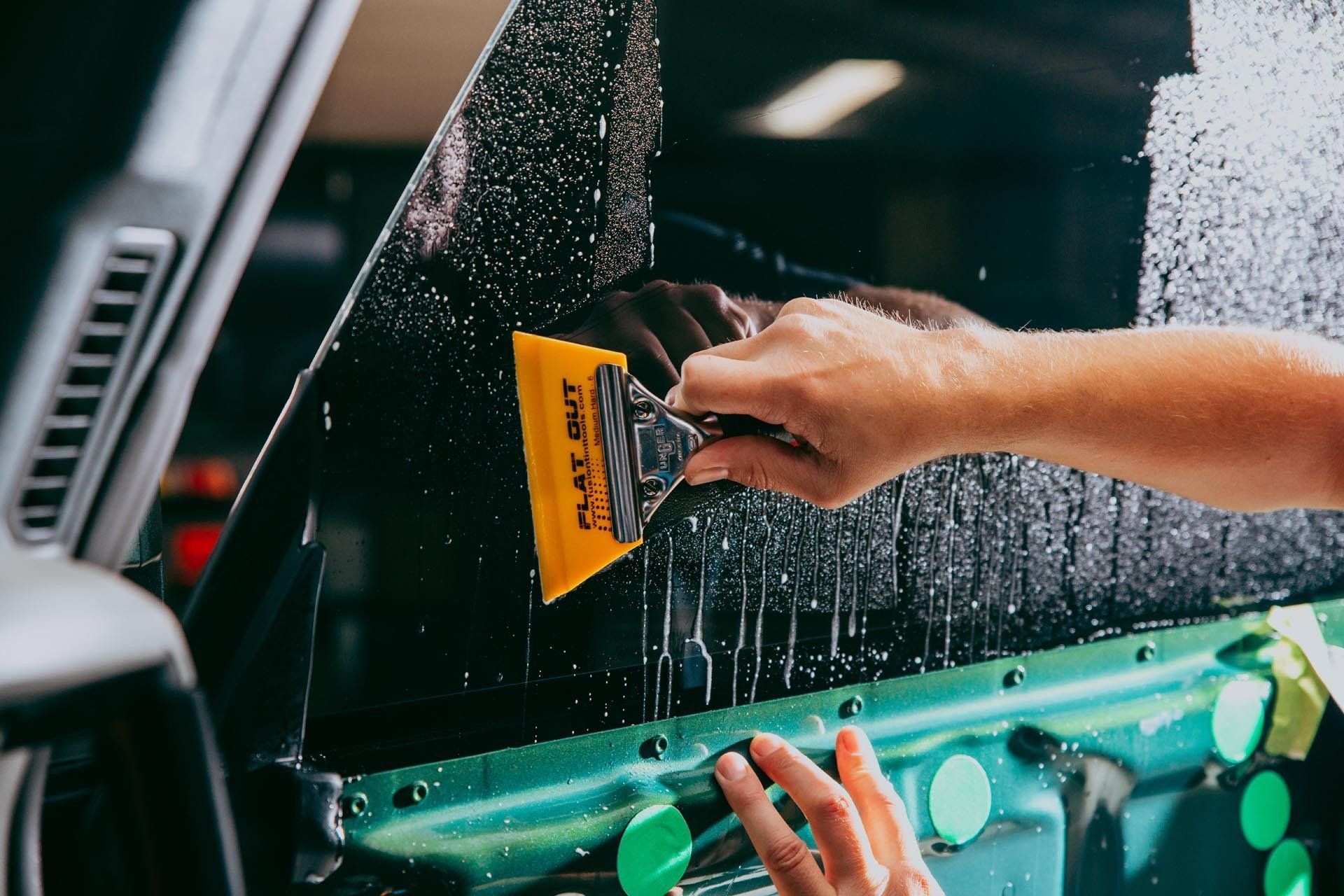When it comes to vehicle maintenance, most people think about oil changes, tire rotations, or brake checks. But your car’s window tint? That often gets overlooked—until it starts to fail. From bubbling and peeling to fading and that infamous “purple haze,” worn-out tint is more than just an eyesore. It can affect your comfort, safety, and even your vehicle’s value.
At Superior Auto Shine, we know how much of a difference high-quality tint makes—not just in appearance but in performance. If your
window tint isn’t holding up like it used to, it's time to recognize the warning signs and take action.

Why Tint Matters More Than You Think
Sure, tint looks appealing and keeps prying eyes away, but it also plays a critical role in temperature regulation and UV protection. A good-quality tint blocks harmful ultraviolet rays, reduces interior heat, cuts glare, and protects your upholstery from sun damage.
But when does it start to fail? You’ll notice—and you’ll feel the difference.
Warning Signs of Failing Tint
Failing tint doesn’t usually happen overnight. It gives off visual and functional red flags. Here are some of the most common ones:
Purple Discoloration
If your tint is turning purple, it’s a clear sign the film is breaking down. This discoloration typically affects dyed films that aren’t UV-resistant. Not only does it hurt your car’s look, but it also means the tint is no longer blocking UV rays effectively.
Bubbling and Peeling
Bubbles along the surface or peeling edges often result from adhesive failure. They may start small but can quickly grow, creating distorted views and making your windows look neglected. Peeling can be especially dangerous if it obstructs your visibility while driving.
Reduced Clarity and Hazy Appearance
If your windows are starting to look cloudy or blurry, it might be a sign that the tint is degrading. This can happen when moisture, air, or dirt seeps beneath the film. A hazy view is more than a nuisance—it can compromise your ability to drive safely.
When Performance Starts to Slip
Your window tint is supposed to do more than look attractive. It's there to reduce interior temperatures and keep your ride comfortable and protected.
Is Your Car Hotter Than Usual?
If your car seems to heat faster or takes longer to cool down, your tint may not be rejecting heat like it should. Studies show that degraded tint can allow cabin temperatures to climb 15°F higher than those with properly functioning film.
Are You Squinting Behind the Wheel?
A drop in glare reduction is another key sign of failure. If sunlight or headlights are causing you to squint more than usual, your tint may no longer be offering adequate light diffusion. This defect can be particularly problematic during early morning and evening drives.
What Causes Tint to Fail?
Knowing the causes of tint degradation can help you make better decisions when it's time for replacement.
UV Exposure
The number one culprit is ultraviolet radiation. Over time, even the best tint can start to degrade under constant exposure to sunlight. Such degradation leads to fading, discoloration, and material breakdown.
Temperature Extremes
If you live in an area with hot summers and chilly winters, your tint expands and contracts with the changing temperatures. This repeated stress can cause the adhesive to weaken and eventually fail.
Humidity and Salt
Moisture can seep into poorly installed film or worn edges, especially in humid or coastal climates. Salt in the air can accelerate the breakdown process. Trapped moisture creates air pockets that lead to peeling and corrosion beneath the film.
Poor Installation
A tint job is only as effective as the installer. Using too much water, not prepping the glass properly, or rushing the job can cause premature bubbling, uneven surfaces, and early failure. Surveys indicate that around 30% of tint problems stem from installation errors.
Low-Quality Film
Cheap tint may save you money up front, but it’s more likely to fail quickly. Inferior materials don’t offer strong UV protection and tend to degrade much faster. Investing in high-performance ceramic or carbon-based tints makes a big difference in longevity.

Bubbling and Peeling: What They Mean
Let's delve deeper into two prevalent (and often frustrating) indications that your tint has reached its peak.
Bubbling
Tiny bubbles trapped under the surface may seem harmless at first, but they’re signs of adhesive failure. Over time, these bubbles grow, distort your view, and compromise the film’s ability to block heat and UV rays.
Not only do they look awful, but they can also place added strain on your car’s AC system as the tint loses its heat-reducing power. The sooner you address bubbling, the easier—and cheaper—it is to fix.
Peeling
Peeling usually starts at the edges and spreads across the window. It's often caused by exposure to moisture or simply old age. Once peeling starts, it rarely stops, and large sections of tint can lift, flap in the wind, or obstruct your view entirely.
It’s not just an aesthetic issue—it’s a safety one. Loose film can create dangerous distractions while driving.
If you're noticing either of these issues, don’t wait. Schedule a professional inspection at Superior Auto Shine to prevent bigger problems and maintain a clean, professional look for your vehicle.
Fading and the Dreaded Purple Haze
That “purple haze” isn’t just unattractive—it’s a sign your tint has lost its effectiveness. Dyed films are especially prone to this. As the dye fades, the film turns violet or bluish-purple, and its UV-blocking abilities disappear with it.
Over time, fading reduces your tint’s ability to:
- Protect interior upholstery from sun damage
- Maintain a cool interior temperature
- Offer daytime privacy
- Reduce glare from headlights or sunlight
If your tint is fading, your car is more exposed than you might think.
How to Prevent Future Tint Problems
You can’t stop time, but you can prolong the life of your tint with a few simple strategies:
1. Clean Gently and Regularly
Use a soft microfiber cloth and a tint-safe cleaner (no ammonia!) to gently clean your windows. Regular cleaning prevents debris buildup and helps you spot issues early.
2. Park in the Shade
Whenever possible, park your car in a garage or under cover. Excessive sun exposure shortens the lifespan of your tint, especially in summer.
3. Use a Sunshade
Windshield sunshades reduce interior heat and protect your tint from constant UV bombardment. This is a small investment that yields significant benefits.
4. Inspect Monthly
Check your tint regularly for bubbling, peeling, discoloration, or haze. Early detection means fewer problems (and lower repair costs) later on.
Why Choose Superior Auto Shine?
At Superior Auto Shine, we know what separates a good tint job from a great one. Our team uses top-quality ceramic and carbon films that offer longer life, better performance, and stronger UV protection than standard dyed tints.
More importantly, we treat every installation like it’s our vehicle. That means
- Thorough glass prep before application
- Precision cutting for a seamless fit
- Expert installation with attention to detail
- Transparent recommendations based on your needs
Whether you’re dealing with an aging tint job or looking to upgrade to a premium film, we’re here to help.
Ready to Say Goodbye to Bubbles, Peels, and Purple Haze?
Don’t wait until failing tint turns into a visibility hazard or a costly repair. Address the warning signs early and let the pros at Superior Auto Shine restore clarity, comfort, and style to your ride.
Call us at (253) 260-6868 or visit Superior Auto Shine to schedule your window tint consultation today.
Protect your investment—and enjoy every drive, without the distractions.

